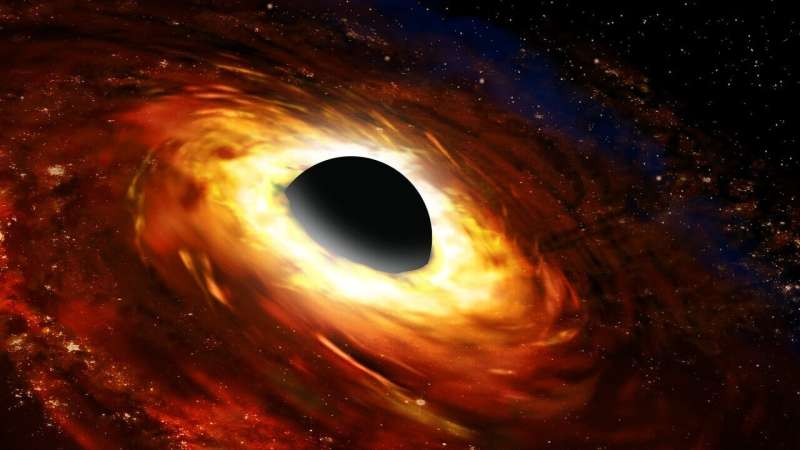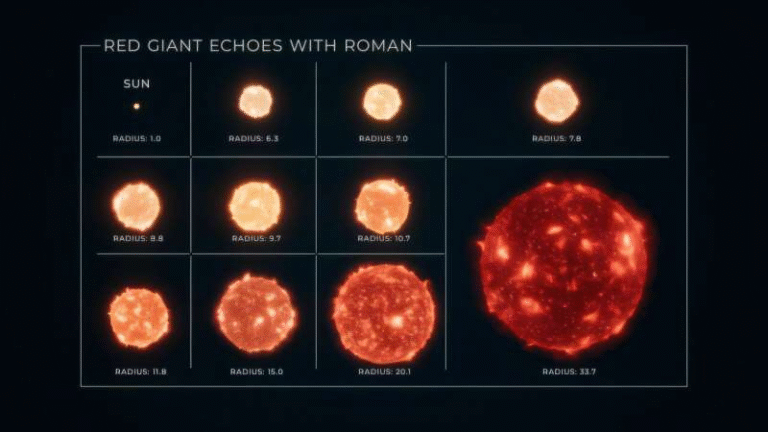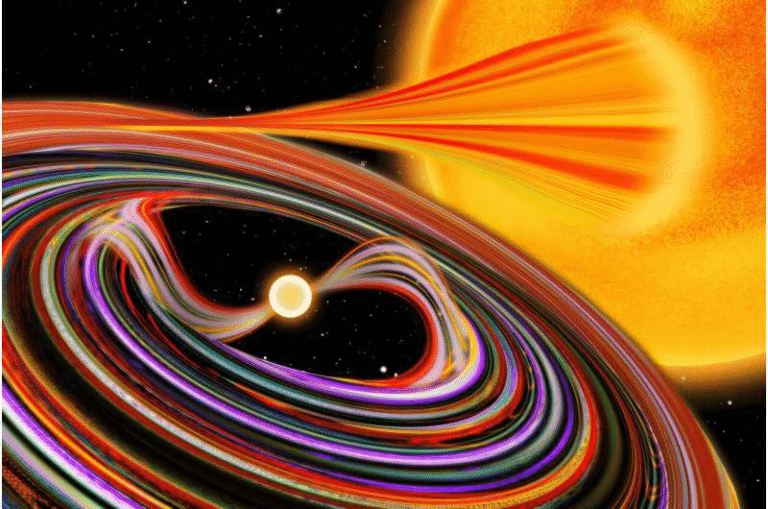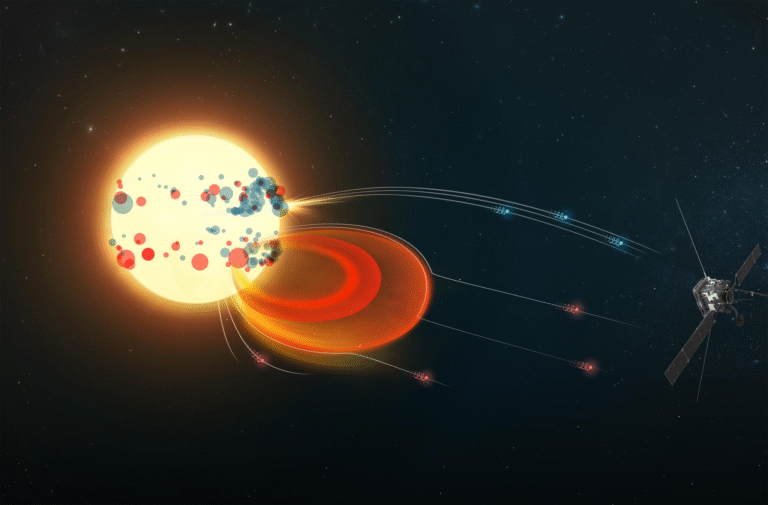Simulations Show the Early Universe Helped Black Holes Grow Fast but Only for a Short Time

Black holes are some of the most mysterious and powerful objects in the cosmos, and scientists have long been puzzled by how some of them managed to grow so huge in such a short amount of time after the Big Bang. A new study by researchers Ziyong Wu, Renyue Cen, and Romain Teyssier dives deep into this mystery using advanced hydrodynamic simulations, offering insights into how the early universe may have temporarily helped black holes grow beyond known physical limits—but only for a while.
The Mystery of the Cosmic Giants
At the center of our own Milky Way Galaxy lies a supermassive black hole with a mass of over 4 million times that of our Sun. But that’s nothing compared to the black hole at the heart of galaxy M87, which weighs in at about 6.5 billion solar masses. Even more astonishing, astronomers have discovered black holes exceeding 40 billion solar masses across the universe.
Naturally, this raises a big question: how did they get so massive so quickly?
One widely accepted idea is that black holes grew through galactic mergers over billions of years. Galaxies form in clusters due to dark matter and dark energy, and as they merge, their central black holes merge too, gradually forming the supermassive black holes we see today.
This explanation makes sense for the current universe—but there’s a serious problem when looking back in time. Observations by the James Webb Space Telescope (JWST) have revealed supermassive black holes in galaxies that existed when the universe was less than 500 million years old. Some of these early black holes already had masses exceeding a billion suns.
According to traditional models, that’s far too massive, far too soon. Even with constant growth, they wouldn’t have had enough time to reach such enormous sizes under the standard limits of physics.
Understanding the Eddington Limit
The main growth restriction for black holes is known as the Eddington Limit. This limit defines how fast a black hole can consume matter before the energy output from that process pushes incoming gas away.
As gas spirals into a black hole, it gets compressed and heated to extreme temperatures, releasing radiation that exerts pressure outward. When the radiation pressure equals the inward pull of gravity, the black hole can’t pull in any more matter efficiently. That’s the Eddington Limit.
If a black hole grows too fast, it essentially chokes on its own energy output, preventing further rapid feeding. Under this limit, the rate of growth is capped, meaning that even the hungriest black hole can’t devour matter indefinitely fast.
The New Study’s Approach
The new research, posted on the arXiv preprint server in October 2025, examined what happens to black hole growth under the extreme conditions of the early universe, specifically during the cosmic dark ages and the epoch of reionization—the time when the first atoms, stars, and galaxies began to form.
The scientists simulated what happens when dense clouds of gas collapse to form the earliest black holes, using highly detailed cosmological hydrodynamic models to explore how gas density, temperature, and pressure evolve in that environment.
They found that during these early stages, there were regions dense enough that the usual Eddington feedback loop didn’t work as effectively. The gas surrounding the black hole was so thick and compact that even the intense radiation couldn’t blow it away.
As a result, these early black holes could grow at a super-Eddington rate—meaning faster than the standard growth limit allows.
Super-Eddington Growth: A Cosmic Shortcut
The simulations showed that this super-Eddington phase could indeed happen in the early universe, allowing black holes to rapidly bulk up to around 10,000 solar masses. However, this phase didn’t last forever.
Once the black hole reached that size, feedback effects kicked in. The intense energy output from the black hole began clearing the surrounding gas, shutting down the runaway feeding frenzy. After that, growth slowed down to the normal Eddington rate, where radiation pressure and gravity balance each other again.
The researchers found something even more interesting: in the long run, these short bursts of rapid growth didn’t give black holes a permanent advantage. When they compared the evolution of black holes that went through a brief super-Eddington phase with those that always grew at the Eddington limit, the difference largely disappeared over time.
In other words, while a black hole might sprint ahead in the early race, it eventually ends up neck-and-neck with those that took the steady route—similar to how a sprinter like Usain Bolt might lead early in a marathon, only to be overtaken later by Eliud Kipchoge, the endurance runner.
Implications for Early Supermassive Black Holes
This finding is significant because it suggests that even super-Eddington growth cannot fully explain the existence of billion-solar-mass black holes in the early universe. If these rapid early growth spurts weren’t enough, something else must be at play.
The researchers concluded that the only way to explain the enormous black holes seen in the first few hundred million years is if they started as massive “seed” black holes—possibly with initial masses of 10,000 to 100,000 suns.
These seed black holes might have formed through direct collapse, where enormous primordial gas clouds collapsed under gravity without first forming stars. Some scientists even speculate that they could have originated during the inflationary period—an extremely early phase just after the Big Bang, when the universe expanded exponentially.
Why This Matters
Understanding how supermassive black holes formed so early is one of the biggest open questions in astrophysics. Their presence influences how galaxies form and evolve, how cosmic structure develops, and even how light from the early universe reaches us today.
This study helps narrow down what’s possible and what isn’t. If short bursts of super-Eddington feeding can’t produce the observed early monsters, it points researchers toward new physics or early-universe scenarios. It also reinforces the idea that seed mass matters—that is, the black holes we see today may have started off already quite large.
A Quick Refresher on Black Hole Types
There are generally three categories of black holes:
- Stellar-mass black holes: These form when massive stars collapse at the end of their lives. They typically range from a few to tens of solar masses.
- Intermediate-mass black holes: These bridge the gap between stellar and supermassive ones, ranging from hundreds to hundreds of thousands of solar masses.
- Supermassive black holes: These giants, with masses of millions to billions of suns, sit at the centers of galaxies.
The big mystery has always been how intermediate and supermassive black holes form. This new study doesn’t solve the puzzle completely but gives us a clearer picture of the early stages—showing that the environment of the young, dense universe temporarily allowed faster growth before nature put the brakes back on.
The Bigger Picture
Astronomers will continue using tools like the James Webb Space Telescope to observe early galaxies and their central black holes, collecting more data to test theories like this one.
If the idea of massive seed black holes turns out to be correct, it will reshape how we think about the formation of the first galaxies, the origin of cosmic structure, and even the nature of the Big Bang itself.
For now, the new study offers a realistic checkpoint: yes, the early universe gave black holes a head start, but it wasn’t enough to explain everything. That means the universe may still be hiding secrets about how its darkest giants were born.
Research Reference:
How Fast Could Supermassive Black Holes Grow At the Epoch of Reionization? – Ziyong Wu, Renyue Cen, Romain Teyssier (2025, arXiv:2510.16532)





